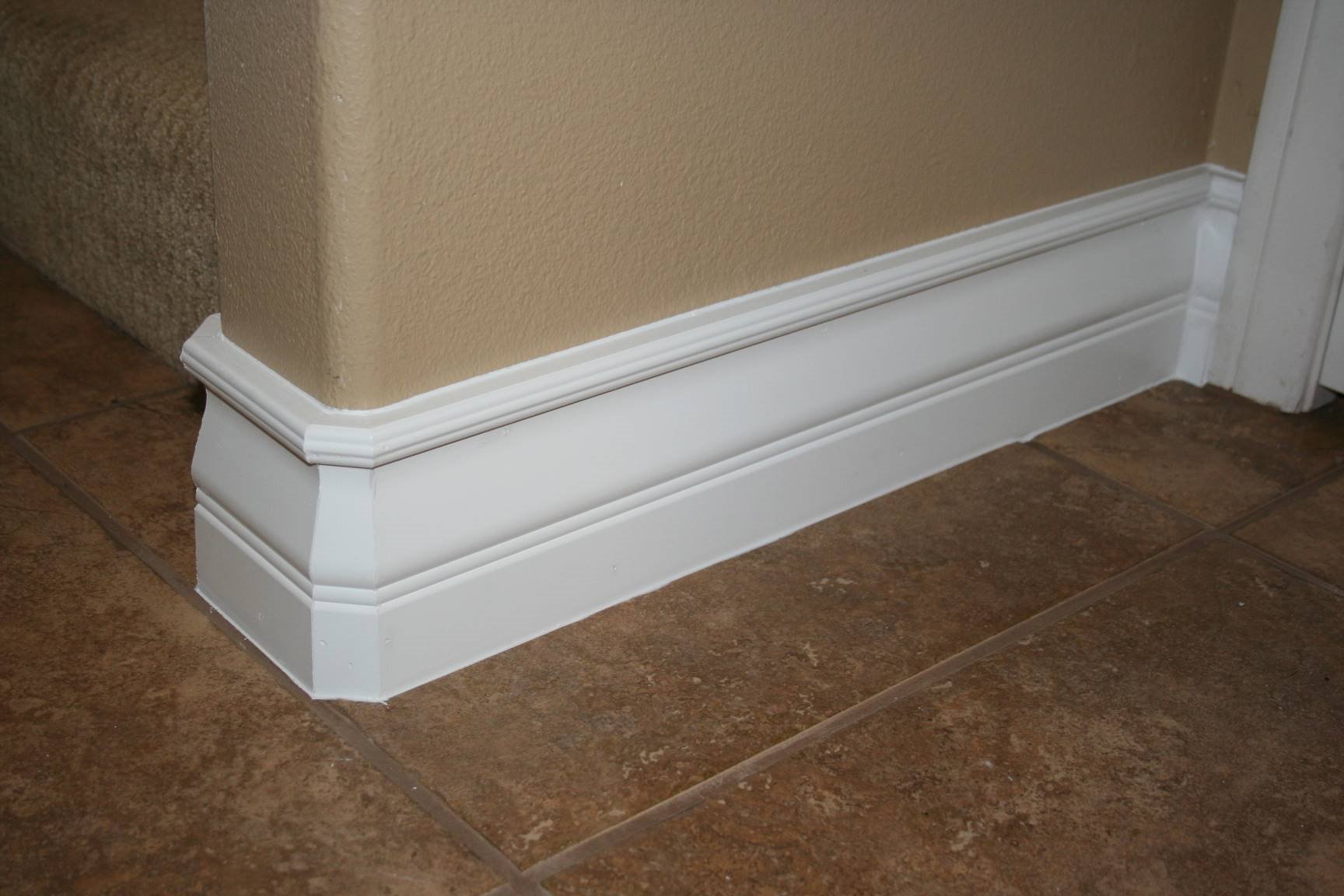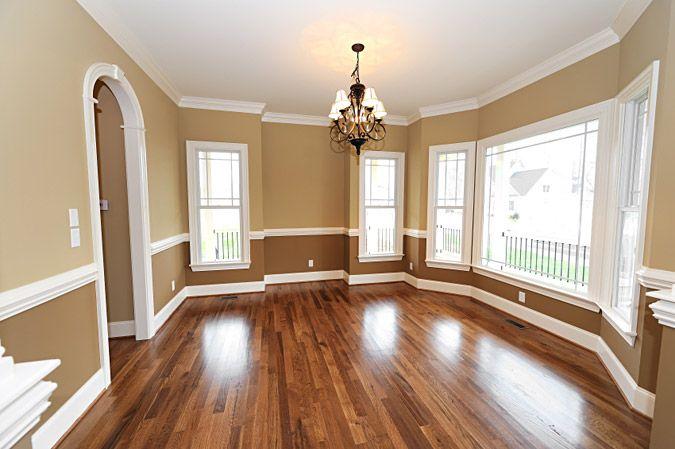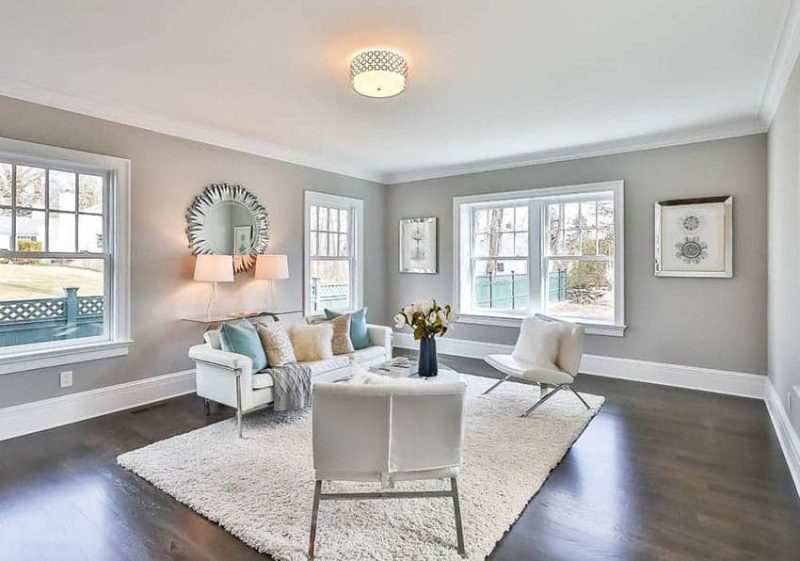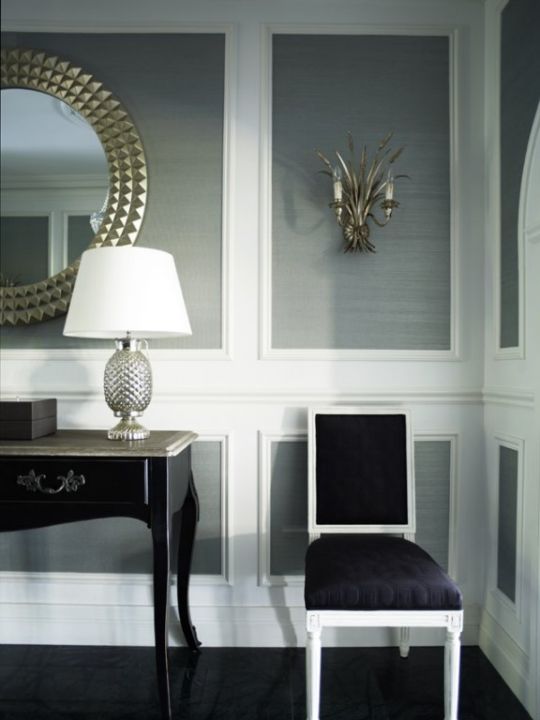Crown molding is a classic and elegant addition to any living room. It adds a touch of sophistication and can instantly elevate the look of a room. Crown molding refers to the decorative trim that is installed at the top of walls, where they meet the ceiling. It can be made of various materials such as wood, plaster, or polyurethane and comes in a variety of styles to suit different design preferences. Crown molding in living room
While crown molding adds the finishing touch to the top of walls, baseboard molding serves the same purpose at the bottom of walls. It covers the gap between the floor and wall, giving a clean and polished look to the room. Baseboard molding can also be used to hide any imperfections or gaps between the wall and floor. It is typically made of wood or MDF (medium-density fiberboard) and can be painted or stained to match the rest of the room. Baseboard molding in living room
As the name suggests, chair rail molding was originally installed to protect walls from chair backs. However, it has now become a popular decorative element in living rooms. It is installed horizontally on walls, usually at the height of a chair, and can be used to break up a large wall or add visual interest to a room. Chair rail molding can be made of wood, plaster, or polyurethane and comes in a variety of designs and sizes. Chair rail molding in living room
Wainscoting is a type of paneling that is installed on the lower half of walls, usually up to the height of a chair rail. It adds texture and warmth to a room and can also serve as a protective barrier for walls. Wainscoting can be made of wood, MDF, or even wallpaper, and comes in a variety of styles such as raised panel, flat panel, or board and batten. It is a great way to add character and charm to a living room. Wainscoting in living room
If you're looking to add a touch of luxury to your living room, consider decorative molding . This type of molding is purely for aesthetic purposes and can come in various forms such as intricate patterns, rosettes, or medallions. It can be installed on walls, ceilings, or even around windows and doors. Decorative molding is usually made of plaster or polyurethane and can be painted or left in its natural finish. It is a great way to make a statement in any living room. Decorative molding in living room
With so many types and styles of molding available, the possibilities for using them in a living room are endless. Here are some molding ideas to inspire your next home renovation project. You can combine different types of molding, such as crown molding and wainscoting, to create a unique look. Or, you can use different materials, such as wood and plaster, to add texture and contrast to a room. Molding can also be used to create a feature wall or to frame artwork. The options are endless! Molding ideas for living room
Installing molding may seem like a daunting task, but with the right tools and techniques, it can be a DIY project. The first step is to measure the walls and determine the amount of molding needed. Next, you'll need to choose the type of molding and design. Once you have the materials, you can start installing the molding by cutting it to size and nailing it into place. It is important to ensure that the molding is level and properly aligned. If you're not confident in your DIY skills, it's best to hire a professional to install the molding for you. Installing molding in living room
As mentioned earlier, there are various types of molding that can be used in a living room. Some of the most popular types include crown molding, baseboard molding, chair rail molding, and wainscoting. However, there are also other types such as cove molding, picture rail molding, and panel molding. Each type has its own unique style and purpose, so it's important to consider the overall design and functionality of a room before choosing the right type of molding. Types of molding for living room
Molding can be painted to match the rest of the room or to add a pop of color. When painting molding , it's important to use the right type of paint and primer. For wooden molding, use an oil-based primer and paint, while for plaster or polyurethane molding, use a water-based primer and paint. It's also important to properly sand and clean the molding before painting to ensure a smooth and long-lasting finish. Painting molding in living room
The design of molding can make a big impact on the overall look of a living room. When choosing a molding design , consider the style of the room and the other elements in it. For a more traditional look, opt for intricate and ornate designs, while for a modern or minimalist room, simpler designs may be more suitable. It's also important to consider the size and scale of the room when choosing a molding design. Larger rooms can handle bigger and bolder designs, while smaller rooms may look overwhelmed. Molding design for living room
The Importance of Addressing Molding in Your Living Room
/Diningroomwithcrownmolding-GettyImages-145121522-85951b058d5f406cb48bd96375265b2e.jpg)
Don't Let Molding Ruin Your Home's Design
 When it comes to designing a living room, many homeowners focus on the furniture, color scheme, and decorations. However, one important aspect that is often overlooked is the
molding
. Molding is the decorative trim that runs along the bottom of walls, around doors and windows, and along the ceiling. It may seem like a small detail, but it can have a big impact on the overall look and feel of your living room. In fact, addressing
molding
in your living room is essential for creating a cohesive and polished design.
When it comes to designing a living room, many homeowners focus on the furniture, color scheme, and decorations. However, one important aspect that is often overlooked is the
molding
. Molding is the decorative trim that runs along the bottom of walls, around doors and windows, and along the ceiling. It may seem like a small detail, but it can have a big impact on the overall look and feel of your living room. In fact, addressing
molding
in your living room is essential for creating a cohesive and polished design.
What is Molding?
 Molding is a decorative element that has been used in architecture and interior design for centuries. It is typically made of wood, plaster, or composite materials and can come in a variety of shapes and styles. Some common types of
molding
include crown molding, baseboards, chair rails, and wainscoting. Each type of
molding
serves a different purpose and can add a unique touch to your living room.
Molding is a decorative element that has been used in architecture and interior design for centuries. It is typically made of wood, plaster, or composite materials and can come in a variety of shapes and styles. Some common types of
molding
include crown molding, baseboards, chair rails, and wainscoting. Each type of
molding
serves a different purpose and can add a unique touch to your living room.
The Impact of Molding on Your Living Room
 Molding can greatly enhance the aesthetic appeal of your living room. It adds depth, texture, and character to your walls and can give the illusion of a higher ceiling or wider space. Additionally,
molding
can also serve as a transition between different materials, such as where the wall meets the floor or where the ceiling meets the walls. It can also cover up imperfections or gaps in these areas. However, if not addressed properly,
molding
can also become an eyesore and detract from the overall design of your living room.
Molding can greatly enhance the aesthetic appeal of your living room. It adds depth, texture, and character to your walls and can give the illusion of a higher ceiling or wider space. Additionally,
molding
can also serve as a transition between different materials, such as where the wall meets the floor or where the ceiling meets the walls. It can also cover up imperfections or gaps in these areas. However, if not addressed properly,
molding
can also become an eyesore and detract from the overall design of your living room.
How to Address Molding in Your Living Room
 First and foremost, it is important to choose the right type of
molding
for your living room. Consider the style and design of your home, as well as your personal taste, when selecting
molding
. You want to choose
molding
that complements the overall design and color scheme of your living room. Additionally, proper installation is crucial for achieving a polished look. It is recommended to hire a professional to install
molding
in your living room to ensure it is done correctly and with precision.
In conclusion, addressing
molding
in your living room is critical for achieving a well-designed and cohesive space. It may seem like a minor detail, but it can make a big difference in the overall aesthetic. Choose the right type of
molding
, ensure proper installation, and your living room will be transformed into a beautifully designed space. Don't let
molding
ruin your home's design – give it the attention it deserves and enjoy the impact it can make.
First and foremost, it is important to choose the right type of
molding
for your living room. Consider the style and design of your home, as well as your personal taste, when selecting
molding
. You want to choose
molding
that complements the overall design and color scheme of your living room. Additionally, proper installation is crucial for achieving a polished look. It is recommended to hire a professional to install
molding
in your living room to ensure it is done correctly and with precision.
In conclusion, addressing
molding
in your living room is critical for achieving a well-designed and cohesive space. It may seem like a minor detail, but it can make a big difference in the overall aesthetic. Choose the right type of
molding
, ensure proper installation, and your living room will be transformed into a beautifully designed space. Don't let
molding
ruin your home's design – give it the attention it deserves and enjoy the impact it can make.













































































:max_bytes(150000):strip_icc()/GettyImages-154953002-5c5ba3d9c9e77c000159c228.jpg)
:max_bytes(150000):strip_icc()/CrownMolding-5be2593e46e0fb005173d278.jpg)















